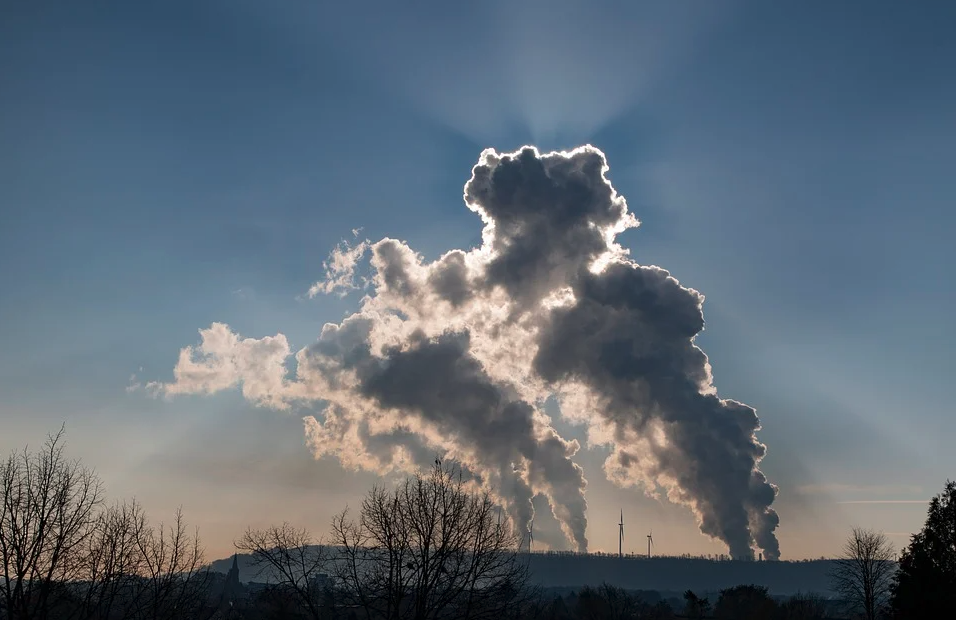Feature image courtesy of catazul via Pixabay
- Ammonia emissions have been non-compliant for 7 out of the last 9 years, driven by growth of the agriculture sector.
- Ireland can achieve compliance with the 2030 ceiling for ammonia through full implementation of planned ammonia reduction measures.
- Ireland is compliant for 2019 with the emissions ceilings under the NEC Directive for nitrogen oxides, non-methane volatile organic compounds and sulphur dioxide.
- Full implementation of planned policies and measures, including those in the Climate Action Plan that target greenhouse gas emissions, will reduce emissions of air pollutants. Further action may also be required for some pollutants to meet tougher 2030 EU emission limits.
3rd June 2021: The Environmental Protection Agency (EPA) today published a compliance assessment for emissions of five key air pollutants which impact air quality, health and the environment. The pollutants, which are subject to current and future emissions ceilings under the EU National Emissions Ceiling (NEC) Directive, are:
- ammonia,
- non-methane volatile organic compounds,
- sulphur dioxide,
- nitrogen oxides and
- fine particulate matter (PM5).
Emissions of other air pollutants and heavy metals not subject to NEC Directive ceilings are also reported on.
This latest report shows that, despite decreasing in 2019, ammonia emissions are still non-compliant with the EU ceiling and have now been non-compliant for 7 out of the last 9 years. Agriculture dominates emissions of ammonia (99 per cent), which arise from animal manures and nitrogen fertiliser. However, there are some encouraging signs of abatement measures being adopted at farm level, with approximately 16 per cent of cattle slurries applied using low emission spreading techniques, avoiding over 3,000 tonnes of ammonia emissions. There was also a four-fold increase, albeit from a low base, in the use of inhibited urea fertiliser products in 2019.
Emissions of nitrogen oxides – primarily from transport and diesel fuelled vehicles in particular – decreased by 9.2 per cent in 2019 as vehicle NOx abatement technologies continue to improve. Emissions of non-methane volatile organic compounds also decreased slightly (1.1 per cent) in 2019. These mostly arise from spirit production in the food and beverage industry, animal manures and fertilisers.
There was a 13.1 per cent decrease in emissions of fine particulate matter due to lower heating requirements in 2019, while emissions of sulphur dioxide continued on a downward trend. Ireland is compliant for 2019 with the emissions ceilings under the NEC Directive for nitrogen oxides, non-methane volatile organic compounds and sulphur dioxide, whilst a ceiling for fine particulate matter doesn’t come into force until 2020.
Sharon Finegan, Director of the EPA’s Office of Environmental Sustainability said:
“Emissions of all air pollutants need to reduce further to protect air quality and health and achieve compliance with EU emissions limits. The National Clean Air Strategy, which is currently being finalised, needs to set out the proposed measures to reduce emissions.
It is encouraging to see ammonia emissions beginning to be addressed at farm level. The assessment shows that Ireland can comply with the 2030 ammonia ceiling but this requires full implementation of measures in the Department of Agriculture’s AgClimatise strategy, and the National Air Pollution Control Programme. ”
Emissions of Sulphur dioxide, particulate matter, ammonia and nitrogen oxides are projected to be compliant with more challenging EU emission ceilings that will apply for 2030, provided planned measures are fully implemented.
Stephen Treacy, EPA Senior Manager said:
“Ireland has seen big reductions in the emissions of many air pollutants over the last thirty years, including a 94 per cent fall in Sulphur dioxide emissions and an over 60 per cent drop in fine particulate matter emissions. Further emissions reductions are possible with the right measures in place.
These measures are far reaching and require big changes in the Agriculture, Transport and Energy sectors including switching to cleaner fuels, technology improvements in slurry application and a significant uptake of electric vehicles. Further measures are required to reduce Non- Methane Volatile Organic Compounds emissions to meet the 2030 ceiling for this pollutant.”
These figures take account of the immediate short-term impact of COVID-19 in 2020 and in the first half of 2021.
For further detail on these figures, see the EPA report Ireland’s Air Pollutant Emissions 1990-2030.
Five main air pollutants
- Sulphur Dioxide (SO2) is the major precursor to acid deposition (including “acid rain”), which is associated with the acidification of soils and surface waters and the accelerated corrosion of buildings and monuments. Emissions of SO2 are derived from the sulphur in fossil fuels such as coal and oil used in combustion activities.
- Nitrogen Oxides (NOx) contribute to acidification of soils and surface waters, tropospheric ozone formation and nitrogen saturation in terrestrial ecosystems. Nitrogen dioxide (NO2) is also associated with diseases such as diabetes, hypertension, stroke, chronic obstructive pulmonary disease (COPD) and asthma. Power generation plants and motor vehicles are the principal sources of nitrogen oxides, through high-temperature combustion.
- Ammonia (NH3) emissions are associated with acid deposition and the formation of secondary particulate matter. The agriculture sector accounts for virtually all (99 per cent) of ammonia emissions in Ireland.
- Non-methane volatile organic compounds (NMVOCs) are emitted as gases by a wide array of products including paints, paint strippers, glues, cleaning agents and adhesives. They also arise as a product of incomplete combustion of fuels, from the storage and handling of animal manure and fertilisers in agriculture and from spirit production.
- Fine particulate matter (such as dust) of diameter less than 2.5 micrometres is termed PM2.5. Sources include vehicle exhaust emissions, soil and road surfaces, construction works and industrial emissions and agriculture. Particulate matter can be formed from reactions between different pollutant gases and is responsible for significant negative impacts on human health.
Further information: Niamh Hatchell/ Emily Williamson, EPA Media Relations Office 053-9170770 (24 hours) or [email protected]













